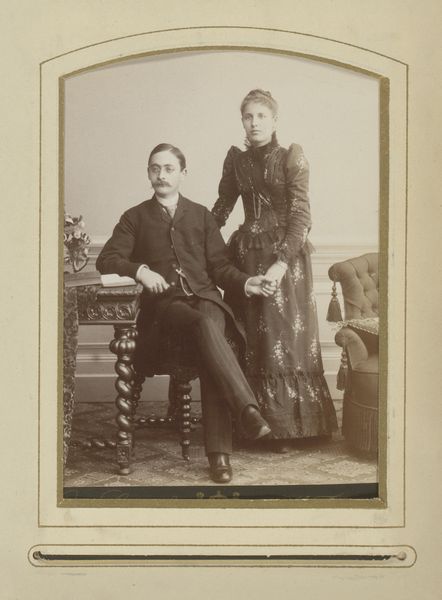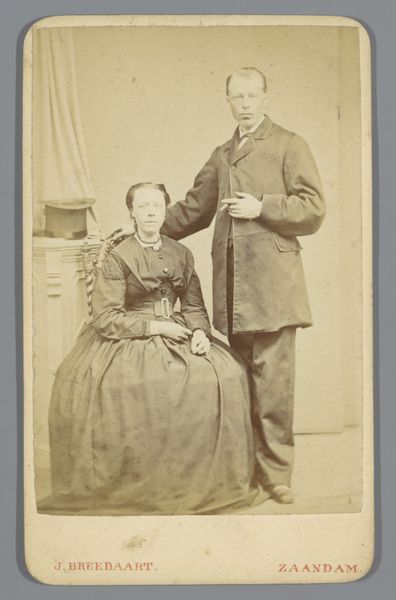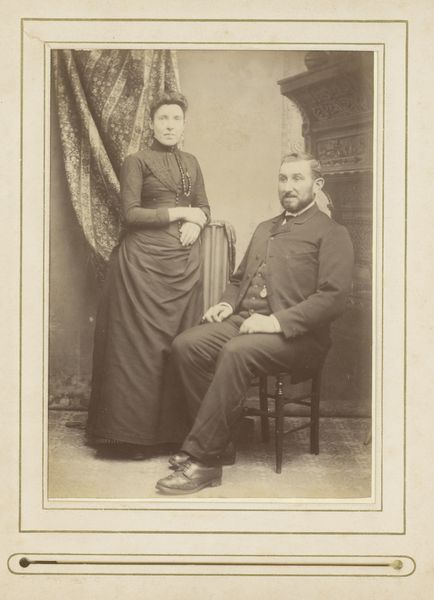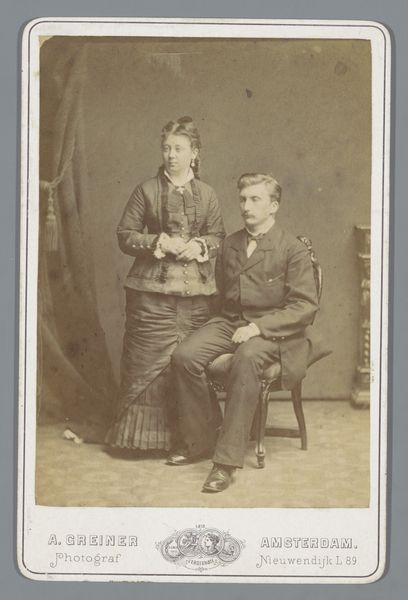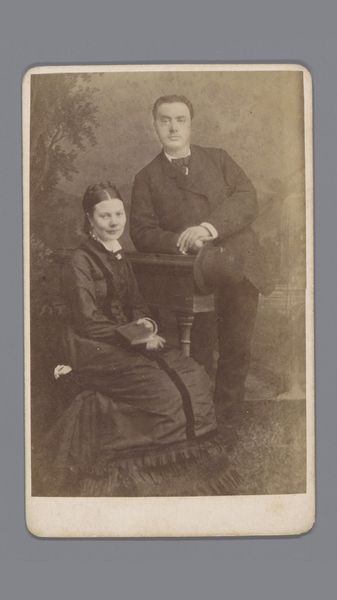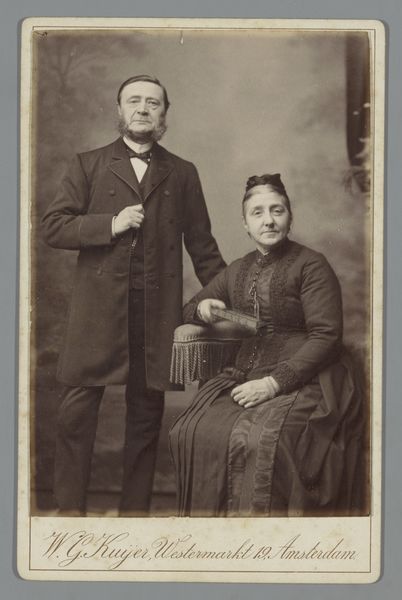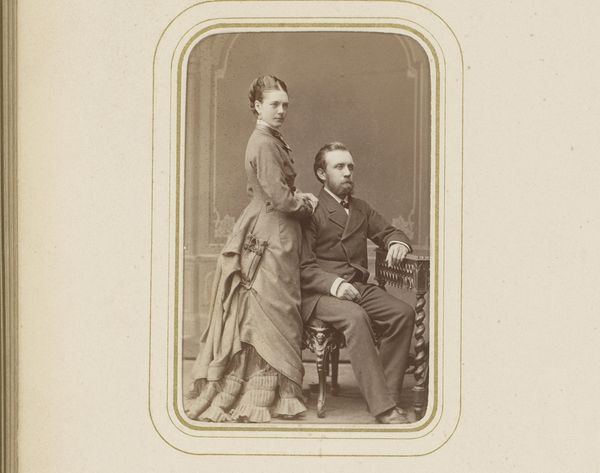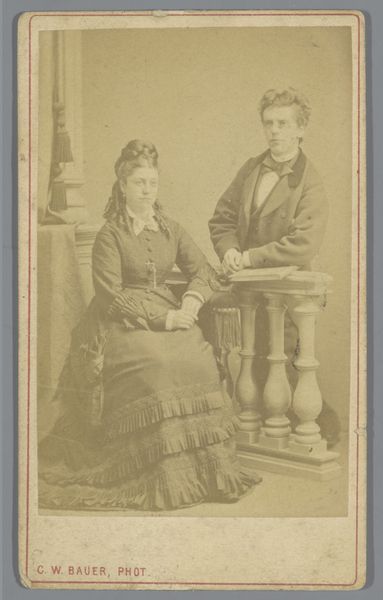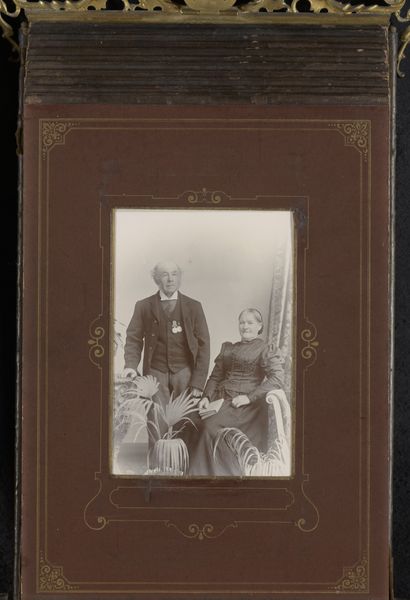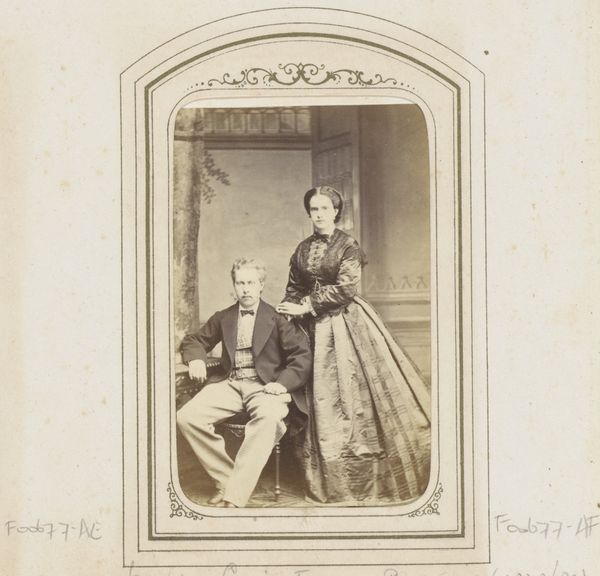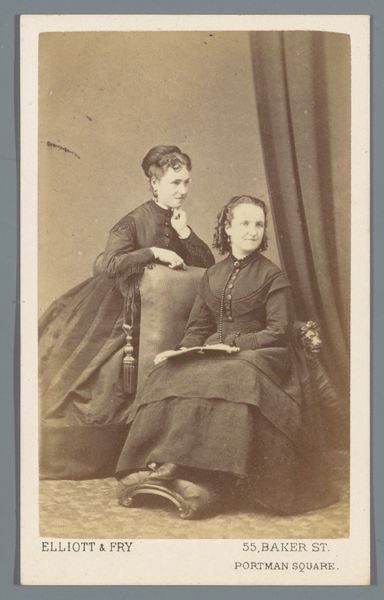
Portret van een staande vrouw en een zittende man 1864 - 1900
0:00
0:00
friedrichjuliusvonkolkow
Rijksmuseum
Dimensions: height 133 mm, width 93 mm
Copyright: Rijks Museum: Open Domain
Editor: Here we have a photograph, "Portret van een staande vrouw en een zittende man," made sometime between 1864 and 1900 by Friedrich Julius von Kolkow. It's a striking, somewhat austere portrait. I am interested by the stark lighting highlighting textures. What do you make of this piece? Curator: This piece really speaks to the rise of photography and its impact on portraiture during the 19th century. Photography democratized image-making, changing production as photography studios created objects en masse. We need to consider who had access to such technology and spaces? It would have required an amount of financial freedom. Also, what narratives and representations are solidified by portraits like this? Editor: That's a good point about accessibility. The staging feels very deliberate. Do you think the positioning, her hand on his shoulder, tells us something about the subjects' relationship or perhaps how they wanted to be perceived? Curator: Precisely! That calculated "casual" touch signifies the performance embedded within photography. The social expectations of gender and status are performed and solidified by such an intimate image, consider how they consumed commodities for presentation here too -- they aren't wearing workwear, and her dress has embellishment suggesting particular cultural and financial expectations. Do we even know the relationship they had, or is it all pretense for the portrait? The details matter – what materials are their clothes made of, the props beside them – how much did they cost, and who produced them? Editor: It really puts a different perspective on a seemingly straightforward image. Thinking about the materials and labor that went into it opens up so many questions. Curator: Exactly. By examining the tangible elements and the processes involved, we understand not just the image but the social and economic forces at play in its creation. Editor: I'll never look at historical photographs the same way again. There's so much more beneath the surface when you start thinking about production and social context.
Comments
No comments
Be the first to comment and join the conversation on the ultimate creative platform.
